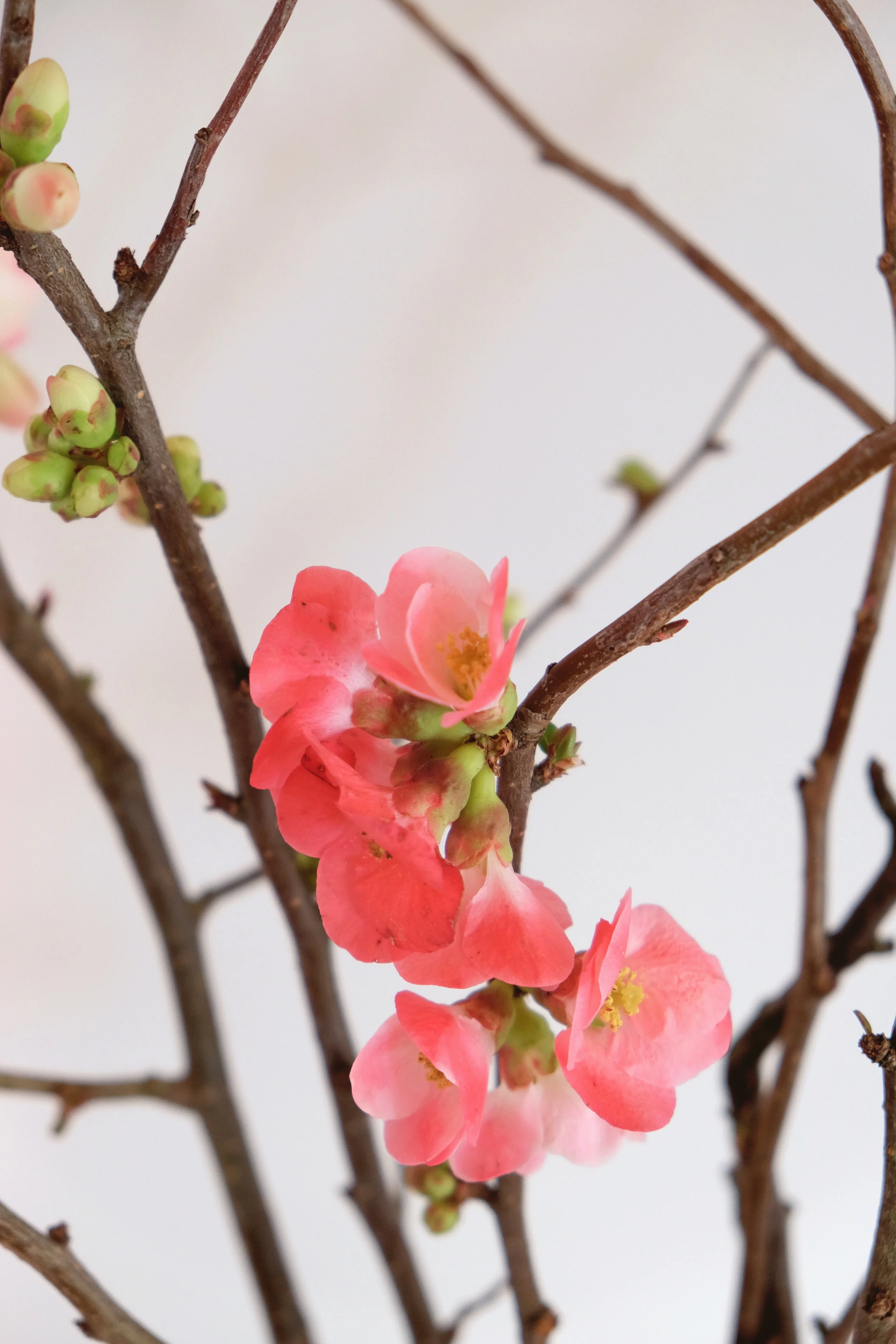Winter finds for the vase
/With July in the south, we see the garden letting out a deep breath as it stops for a rest.
Perennials shrink back to their clumps; trees close their eyes and shrubs maintain guard around them.
In the misty crispness of brighter mornings you can still find cheery signs of life and beauty that can be collected to be enjoyed inside. The tangerine of my neighbour’s japonica peeping over the fence, the ugly/pretty of outrageously fragrant winter sweet pinched for my office and violets waving from the depths. Vivid red bottlebrush, catkins and otherworldly banksia dripping from giant trees, join the excitement of the elegant hellebores beginning their bloom.
Japonica (commonly called flowering quince) – Chaenomeles speciosa
Banksia
Hellebores, cherry blossom, Narcissi ‘Earlicheer’, gone to seed brocollini and snowflakes.
Soon to come will be the early narcissi and delicious daphne, keen pink tips of jasmine, snow drops then snowflakes. Aquilegia start to bolster their foliage and the first signs of blossom promise a treat with their maturing glossy buds.
Right now, my favourite finds to pick tend to be a little “twiggy”, the resulting arrangements a funny mix of hard and soft.
When gathering branches of shrubs and trees, I try to harvest smartly. Using sharp strong secateurs to make clean cuts (best when plants are dry to avoid exposing to disease) and always considering the shape of the plant before I remove a limb. Woody stems need special treatment for arranging as well, with a 45-degree angular cut at the base of the stem, followed by a second, splitting cut running up it vertically. This helps aid hydration and achieve a longer vase life. I also find that a curled-up pillow of chicken wire, fitted snugly into a wider necked vase, aids in creating an arrangement that doesn’t have the luxury of lots of other plants for support.
When cutting woody stems for the vase, cut the stem on a 45-degree angle, then again by snipping vertically up the stem to increase opportunity for hydration.
Winter sweet – Chimonanthus praecox / Ornamental cherry tree ( commonly called the Higan Cherry) – Prunus x subhirtella ‘Autumnalis Rosea’ / Catkins and cones from the Black Alder tree – Alnus glutinosa
Vase by Samantha Elise
If you, like me, look out to see a garden begging for a tidy up and cut back, you might also spot your Japanese anemones moving into their next stage of interest. I am well aware they are a divisive plant, with some varieties being particularly invasive. But, nonetheless, they have so many lovely stages of interest and their winter one is fascinating, both in the garden and the vase.
Having dried out, their naked, spherical seed heads crack and burst open to reveal beautiful little puffs of fluff that cradle their tiny seeds. I readily trim long stems and bring indoors to see the development of their cotton ball tops and eventual collapse. These provide a quirky installation on their own, as much as mixed with other foliage.
Japanese anemone ripe seed heads
Japanese anemone seed heads and feijoa foliage in a vase by Tamara Rookes.
We are also fast approaching the fun opportunity of “forcing blossom”. A short walk out among fruiting trees will reveal maturing buds and, by harvesting some lengths (bearing in mind you are sacrificing the resulting fruit), you can bring them indoors.
A great silver lining of winter power bills is that the heat of your home will prompt these immature buds to open and flourish in a vase. There is a definite magic to watching this happen well before the blossom arrives outdoors and better yet, the limbs will produce acid-green spring foliage to follow. It can be a long-lasting arrangement to see you through to the next goodies.
Collecting blossom buds from fruit trees to bring in and “force” in the heat of my home.
Forced blossom opening inside, much earlier than it would outdoors on the tree.
In a month or so, hellebores will have matured to their best pickable form. With the reputation of being extremely floppy and wilty, restraining yourself to wait until their central seedpods have formed will have positive results. Decide on the length you’d like them for arranging, then sear the bottom 10 per cent of the stem in a cup of freshly boiled water for 20 -30 seconds. Plunging them directly then into cold water will markedly improve their vase life and performance.
Hellebores are best picked when at least one bloom on the stem has developed its firm, central seed pod.
Sear bottom 10 percent of hellebore stems in freshly boiled water for 20 -30 seconds then place directly into cool water of arrangement.
Late winter rewards of Hellebores (commonly called Winter roses) – Helleborus orientalis ‘Pukehou Hybrids’ / Limequat – Citrofortunella x floridana ‘Eustis’ / Snowflake (commonly called a Summer Snowflake) – Leucojum aestivum / White camellia – Camellia sasanqua ‘Setsugekka’ / Large yellow daffodil - Narcissus ‘Carlton’ / Creamy and fragrant smaller narcissus – Narcissus ‘Earlicheer’
Then, just as we are hankering for some sunshine, the trumpeting daffodils arrive to save our eyes. They are terrific pickers, but can be problematic when arranged with other plants.
To reduce the poisoning effect of their sap, pick and snip their stems to the length you’d like to use for arranging, before hydrating in water separately from other plants. Allowing them to rest, dispel and seal their ends will hopefully reduce their anti-social presence in a mixed arrangement.
As a keen arranger, my heart sinks a little as the garden and roadsides move to their tonal winter state. Turns out, there are always soul feeding plants to gather, no matter what the season.
This article was first featured in my Stuff ‘Homed’ gardening column for beginners , The Press, Dominion Post and other regional papers on July 8th 2021
All words and images are my own, taken in my home and garden in Christchurch, New Zealand unless otherwise captioned.














